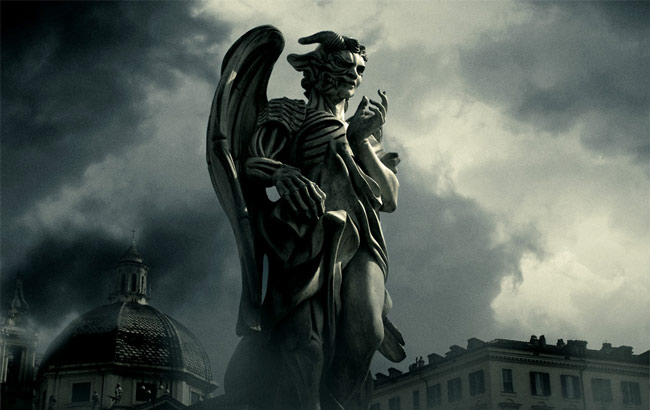The Truth about Angels, Demons and Antimatter

An antimatter explosion threatens to level the Vatican in the movie adaptation of the thriller "Angels and Demons," but real-world physicists are unfazed by this plot.
The story features "Da Vinci Code" hero Robert Langdon racing to recover an antimatter capsule stolen from the CERN particle physics facility in Switzerland. Researchers first figured out how to create and trap antimatter particles at CERN, which gave author Dan Brown the inspiration for his story.
One physicist doesn't find CERN's unexpected publicity from the story upsetting. On the contrary, he's rather pleased.
"I always say that what Dan Brown did for the Roman Catholic Church in 'The Da Vinci Code,' he did for me and my research with 'Angels and Demons,'" said Gerald Gabrielse, a Harvard physicist who currently leads an international research team at CERN.
Antimatter is real, but it still represents a baffling presence in the universe – sub-atomic particles that are the opposite of normal matter. When a particle and antiparticle meet, they mutually annihilate each other and release their entire mass as energy.
This bizarre but intriguing reality has prompted plenty of science fiction writers to dream of antimatter engines powering future civilizations or starships, such as Star Trek's U.S.S. Enterprise.
"Angels and Demons" twists that dream of untapped energy into more of a nightmarish scenario, by suggesting what might happen if a relatively large amount of antimatter annihilated itself with matter all at once. A quarter of a gram of antimatter threatens to unleash the power of 5,000 tons of TNT and destroy everything within a half-mile radius – or so goes the fictional story.
Sign up for the Live Science daily newsletter now
Get the world’s most fascinating discoveries delivered straight to your inbox.
The reality is that physicists can only wish they had so much of the stuff.
"If you take all the antimatter produced in the history of the world and annihilated it all at once, you wouldn't have enough energy to boil a cup of tea," Gabrielse told LiveScience.
Antimatter represents a rare entity in a universe dominated by matter, and scientists still struggle to understand why. What they do know is that creating antimatter requires tremendous effort, such as using particle accelerators at CERN to smash together particles at nearly the speed of light.
An occasional antimatter particle may arise naturally when a cosmic ray strikes Earth's upper atmosphere. But collecting man-made antimatter particles is much more practical for research.
Physicists have only slowed and trapped a small fraction of all the produced particles, in this case known as antiprotons. They use antimatter traps somewhat similar in concept to what "Angels and Demons" describes, with magnetic fields keeping the antimatter particles in a vacuum away from any matter.
"You need a container with no walls, that's the idea," Gabrielse noted. His former project, known as TRAP, successfully created and held charged antiprotons for months.
Now physicists face the more daunting challenge of capturing neutral antihydrogen atoms. The newer international effort, called ATRAP, has put together an antihydrogen trap and is working on a second.
"We are trying right now to trap neutral antihydrogen atoms which we have produced, but no one has succeeded in proving that they've been trapped yet," Gabrielse said.
Such neutral antihydrogen atoms could theoretically be clumped together, whereas charged antiprotons are repelled by each other. Whether an antimatter clump would annihilate with all the power of a small nuke without blowing itself apart remains an open question – and that still assumes physicists can create and collect anything close to a quarter of a gram of antimatter.
One part of "Angels and Demons" may have come true, although unrelated to antimatter. The fictional plot includes retinal scanners guarding a CERN lab, and the real-life CERN happened to adopt such eyeball security after the book came out, Gabrielse explained.
So the plot of "Angels and Demons" doesn't quite annihilate upon contact with reality, but the real-life mystery of antimatter may still trump fiction.
"Why the universe is made out of more matter than antimatter? We don't know the answer to that question at all," Gabrielse said.











